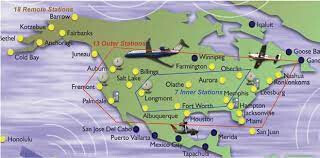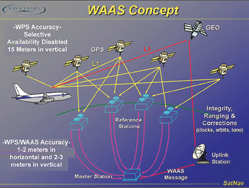Has anyone here compared the two, base station vs NTRIP only?
It sounds like most of us are using a fixed base station on a farm for RTK, but has anyone tried running NTRIP on the rover without a base station either from the inbuilt NTRIP client in AOG, or from a Wi-fi NTRIP Master? If so, what degree of accuracy were you seeing?
I was out testing with this exact setup last week and the autosteer must have been holding a line to within a couple of CM. By eye it looked arrow straight.
If this is the case, then why bother with a base station at all?
I don´t think there is a vs here.
Data from same base station would give same accuracy, coming from radio or via NTRIP.
I use NTRIP to transport RTCM data from my base to my rover.
Reason is we have good mobile coverage.
In my area we do not have any free correction data to connect to via NTRIP (except from some other AOG users with free RTK base, but they live too far away to get cm accuracy)
2 Likes
Ntrip is just a communication standard. It was mainly created to handle multiple users accessing multiple base stations, as well as handling access credentials. It is very handy but adds a small amount of complexity.
You do not need Ntrip for RTK, its just one of many tools for getting data sent from a to b.
My setup is just a cell modem with static ip and route to a port where the corrections can be used. AgIO can connect to this setup as well.
2 Likes
Thanks guys, good answers, but I’m still confused!
You can either use your own base or a remote one using a technology called NTRIP… NTRIP allows your rover to accept corrections over the Internet with no need for the second local receiver acting as a base.
- No need for a local base . You can work with just a rover and still perform an accurate survey.
From the Emlid link.
I get that NTRIP is just another internet protocol that offers RTCM corrections, but isn’t that effectively what a base station does, but locally?
The link you give states pretty categorically that it is an either / or. If this is the case (and it’s entirely possible that I’m still missing something), then why bother with a base station for any area that has cellular coverage?
1 Like
Yeah, that’s my setup too and it seems accurate enough to not require an additional base station.
You raise an interesting point about AgIO though, does the inbuilt NTRIP client work as well as an NTRIP hardware solution? If so (and I imagine so), then the situation is even easier. One RTK2b board alone is all that is required to achieve the Holy Grail 1CM accuracy, no base station required.
1 Like
Ntrip still needs a base the base creates the corrections.
Ntrip just lets you find and switch between multiple bases, with password protection, over the internet.
Bases X 10 -----> Ntrip Caster ------> User Rovers x 10, 000, 000
Base -----> Radio Link ------> Rover
Base ----->Cell Modem ----->Rover
Base -----> Ntrip -----> Site Base ----> Radio -----> Rover
For all intent and purposes these are all the same they get you the corrections you need. But some work better / faster / have more accuracy under certain conditions.
Usually having a permanent 24/7 365 base, properly set up so it actually matches the absolute position of the earth to the Datum the system is calculating in, is faster and more accurate than setting up a new base with new coordinates each and every time.
It all depend on what your final goal for the system you are building is. Do you want year to year repeatability? Do you want maximum accuracy to the absolute geographical coordinates? Do you want minimum dilution vs base line length?
Or do you just need it to drive really straight on the day you are there?
Ntrip requires these elements
Source of corrections - Base station
Server - The software usually embedded in the base or collects from multiple bases to send the data over IP to the Caster
Caster - The main hub computer that reads all bases, directs traffic, and handles client log in.
Clients - All the rover users that will use the correction data
You always need a base, its just how you get the data from it.
5 Likes
A very thorough answer, thanks.
By an online service like RTK2go, you’re using other people’s’ base stations which removes the requirement for your own, doesn’t it?
Also, if this is all delivered over the internet, then geographical distance from a source should be irrelevant.
I get your point about simplicity if you’re working the same fields year on year which is a pertinent point. I am not, maybe that’s the big difference.
NTRIP can deliver corrections from the US to Europe but the correction data would not be usable. The rough formula says you lose accuracy by 1 ppm of the base distance.
Really far away from the base you would not even see the same satellites as the base does.
1 Like
This is also why i consider WAAS to be junk
The corrections are a little different data wise, but it still uses base stations to correct for ionospheric conditions. The closest Base is in Billings, MT to me at 1068kms, the next closest is Winnipeg at 1200kms.
The corrections are very general, and basically very poor to the space weather above my head.


RTK all the way!
To add to @NorthernFarmer 's comment. The base you are using needs to be seeing the same satellites that your rover is seeing to allow it to correct their position data. If it’s a long way away it might not see many common satellites, and the conditions that cause the inaccuracies will be different in a completely different location too. NTRIP over the internet is just a method of sending the corrections (as it radio). It has no bearing on the resulting correction.
3 Likes
Ahhhhhh
Now that makes perfect sense, thanks!
I couldn’t work out why there would be noticeable latency with additional distance as, all things being equal, there should be no noticeable time difference in a packet being delivered to my laptop in the U.K. whether it it routes via China or London.
So this is why you need to connect to the geographically nearest server, because it needs to lock onto the same satellites as the client…?
2 Likes
Exactly! You got it!
+/- 7mm accuracy with rover directly beside the base.
Then your position accuracy dilutes by +/-1mm of uncertainty per km of baseline away from the physical base site if set up properly.
50km away would be +/-57mm uncertainty.
You can only use corrections created for satellites that both base and rover see, and the less latency of delivery the better. So your setup is based on how far up the curve of diminishing returns for accuracy you are willing to go vs convenience of getting the corrections.
2 Likes
But here you are still taking about a local, physical base station connected to the rover via radio. If my nearest NTRIP server is 50 miles away, but I’m connecting to it via cellular (and it’s seeing the same satellites) so does this equation still apply? My knowledge of radio isn’t up to answering this question!
If the ntrip base is physically 50miles / 80km away. You might still fix on a few edge satellites, but your uncertainty is now +/-87mm.
The Ntrip Caster room location could be on the other side of the world from the physical base that is beside you. But this only adds milliseconds of latency offset to the delivery ofcorrections. So corrections will still come ever 1s, but they will be offset 50-1000ms (the ping) from the actual time of observation at the base to when they are used at the rover, depending how long it takes to race through the internet.
Ntrip still requires a real physical basestation to be located somewhere to create the corrections. Ntrip is just like netflix. You log in, pick the base correction you want from a list of streams, and it connects you to its correction.
Unless your Ntrip provider has payed the big bucks for VRS (virtual reference station) technology. This requires you to send your gga position back to the Caster, it does some fancy math based on your position to average all of the closest bases in the network to make a virtual correction solution for you.
2 Likes
Given the cost of a base it really isn’t worth bothering with one that is a long way away. An ardusimple board, an esp32 and you’re done.
6 Likes
I saw your thread on this. Just scanned through it, but am I right in saying you’re using an ESP32 in place of a Wi-fi NTRIP Master?
I’ll read it properly later.
1 Like
You can put same programming on an esp32 as wifi Ntrip master. Just cheaper
2 Likes
Yes. It works fine. I use it to send to RTK2GO but it will act as a caster too.
2 Likes
I have a Wi-fi NTRIP Master which is a great piece of kit, but you’re right, it’s essentially just an ESP32 (of which I have a drawer full!).
Didn’t spend much thought on it, but I couldn’t immediately work out how they had got this working as a web server for the config page. Think this is all covered in your post though.
Thanks Alan, really interesting stuff.
1 Like
I’ve just finished a bit of reading on NTRIP vs UHF / VHF and it looks like CM accuracy is possible with a single GNSS device and RTK over cellular using NTRIP. That is the whole point of NTRIP.
That would mean you are correct; RTK2b board, ESP32 plus your directions on configuration, plus cellular link and you’ve potentially got CM level accuracy for £200.
2 Likes

